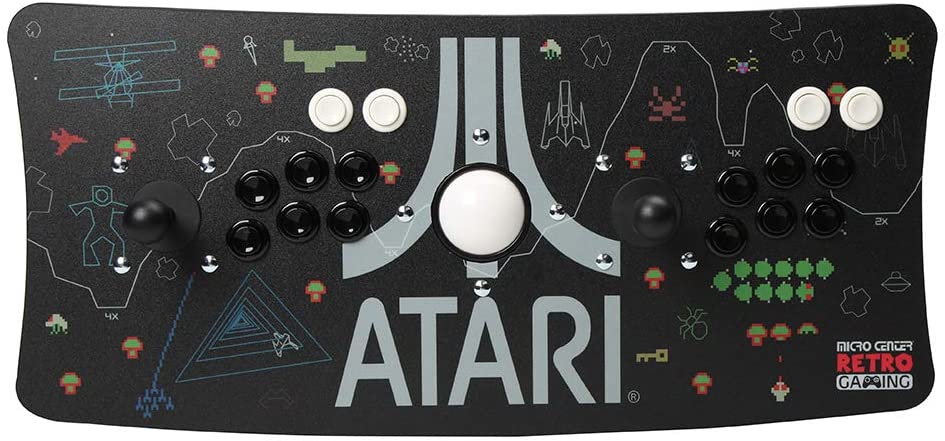
Recently a customer emailed me and asked about the potential compatibility of the Atari Arcade Fightstick. I had actually never heard of the device, so I went on Amazon, looked it up and ordered one. Turns out it is a device offered by Micro Center, which if you don’t know, is an excellent electronics store, kind of like ToysRUs for uber nerds like me.
Upon unboxing the device, the first thing you notice is how similar it is to the X-Arcade Tankstick. It has a similar size, weight and feel. Like the Tankstick it has 2 joysticks, each with its own set of buttons, plus a trackball in the middle. The joysticks and buttons are professional quality, with an audible click, slightly louder than the Tankstick, but during gameplay you likely won’t notice it.
Since comparisons Between the Atari and X-Arcade sticks are inevitable, let’s start with the advantages. The Atari stick is recognized right away, you don’t have to install any additional drivers, just map the joystick and the 6 buttons, and you are good to go. There are two separate white buttons per player, which can be used as the Start and Select buttons, the Tankstick only has the Player 1/2 buttons, you need to map the Select button to something else, usually one of the side buttons. The artwork from the various Atari games is very cool, as opposed to the more minimalist look of the Tankstick.
There are a number of disadvantages. Even though it is recognized right out of the box, it is only recognized as a single player gamepad. In order to use it as a 2-Player stick, you need to modify one of the Raspberry Pi system files, a fairly simple thing for someone with technical and Linux skills, but maybe beyond the expertise of the non-techie crowd. Also, the Atari device only has a 6 button layout per person, unlike the 8 buttons on the Tankstick. Nor does the Atari stick have any side buttons like the Tankstick.
Once you get the 2 player functionality working, the Atari Fightstick plays very well. The joysticks and buttons are very responsive. Classic shooters like 1942 and Galaga play better than in their original hardware. To test it as an actual fight stick, I fired up the gold standard, SFII Championship Edition. Two player fights were seamless, and special moves flowed naturally.
The last test I tried was with trackball games, like Centipede and Marble Madness. The trackball works with those games out of the box, but not that well. It is very slow and sluggish, especially in Marble Madness. You can go into the Desktop function of the Retro Box, and set mouse speed to maximum, and this helps considerably, but is still not quite as responsive as the originals. One major drawback with the trackball is console games that use a mouse, like Duck Hunt. There is no button on the device that acts as a left mouse button, so while you can aim in Duck Hunt, you can’t shoot. With the X-Arcade stick, on the other hand, one of the left side buttons functions as left click, so Duck Hunt can be played properly. The lack of mouse buttons also matters if you want to use the Desktop functionality, for web browsing and such.
All in all, the Atari Fightstick is a very good device. It takes some work to set up, but once you do the gameplay is awesome. The problem is, it costs the same amount as an X-Arcade Tankstick with trackball, which is frankly better. The joysticks and buttons have a slightly better feel on the X-Arcade device, the trackball works better, and the extra buttons on the Tankstick are nice touch. If you can find a good deal on one, such as a sale at your local Micro Center, or a used model on Amazon (my route), it is well worth your money, especially if you don’t care about trackball games.
Here is the link on Amazon, if you want more information or to order
.https://www.amazon.com/gp/product/B089B6N6NB/ref=ppx_yo_dt_b_asin_title_o00_s00?ie=UTF8&psc=1
Have fun, and stay skeptical,
SKG

